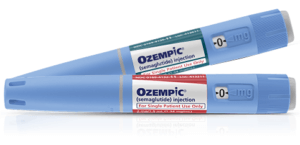 Until very recently, doctors made a clear distinction that divided the most common stomach complaints into two completely unrelated classes, specifically ruling out bacterial infections as a major cause of stomach ulcers.
Until very recently, doctors made a clear distinction that divided the most common stomach complaints into two completely unrelated classes, specifically ruling out bacterial infections as a major cause of stomach ulcers.
On the one hand, infections by bacteria, bugs, and parasites were regarded as typically causing symptoms such as diarrhea, nausea, and vomiting. This was equated to be “stomach flu”, which firmly attributed it to gastrointestinal distress caused by bacterial pathogens, in the same way that influenza viruses caused breathing distress. It was also believed that bacterial gastroenteritis was infectious and could be transmitted as a foodborne illness, and could be prevented by proper hygiene practices in food preparation and serving.
On the other hand, there was peptic ulcer disease, which was a very common and chronic condition, especially in industrialized countries. Although exact numbers varied by country and diagnostic criteria, there are some key figures that tell a compelling story:
- Pre-1980s, 10–15% of adults in developed countries were expected to suffer from a peptic ulcer (either gastric or duodenal) at some point during their lives.
- In the United States, it was estimated that about 4 million people per year had active peptic ulcer disease before the 1990s.
- Roughly 1 in 8 men and 1 in 10 women were expected to experience an ulcer during their lifetime.
- Ulcers were one of the leading causes of hospitalization for gastrointestinal problems in Western countries.
- Recurrence was common: Many patients would have repeated flare-ups over time, since treatment at the time (antacids, acid-blockers like cimetidine, bland diets, and stress management) only addressed symptoms, not the root cause.
For a long time, doctors held to the belief that stress, spicy food, and too much stomach acid were the major causes of stomach ulcers, which manifested as painful sores that formed in the stomach lining. Doctors told patients to eat bland foods, relax, and take medicine to lower their stomach acid. Almost nobody thought germs could live in such a strong acid-filled place like the stomach. That idea seemed unbelievable!
Along came two Australian scientists with a new idea 
I have a special fondness for this story because I was living in the relatively unknown city where this played out, and one of my children had the privilege of post-graduate study under Barry Marshall, one of the great scientists that this tale is all about.
In Perth, Western Australia, two scientists, Dr. Robin Warren and Dr. Barry Marshall, saw something others missed. In 1979, Warren saw tiny spiral-shaped bacteria on stomach tissue samples. In 1981, he teamed up with Marshall, and together they started to study these germs more seriously. They believed the bacteria, later named Helicobacter pylori (or H. pylori), could actually be causing ulcers.
At first, no one believed them. Most scientists in Europe and the United States ignored their findings. Perth was far away from the big research centers, and the idea that bacteria could survive in stomach acid went against what everyone thought they knew.
A big discovery by accident
In 1982, Marshall and Warren tried to grow the bacteria in their lab. At first, nothing worked. But during a long weekend, some gastric biopsy cultures were left in the incubator for 5 days instead of 2, and this time, colonies of what would later be called H. pylori became visible. It was a lucky break, and it proved the bacteria were real and alive. I know that this sounds too much like a fantastic myth since it mirrors the legend of how Alexander Fleming discovered penicillin – the father of all antibiotics – but in fact it’s true! According to Barry Marshall himself and verified academic sources (including the Nobel Prize lectures and Marshall’s own published accounts), the key event was that their H. pylori cultures required longer incubation than was standard at the time. Most labs discarded cultures after 48 hours if no bacterial growth was visible.
Proving the relationship between parasites and ulcers

Still, most scientists ignored the clues, although even before Marshall and Warren, there were signs that the old theories didn’t explain everything. For example, many scientists blamed spicy food as being the major cause of stomach ulcers. But there was one big problem. In India, where people eat spicy foods all the time, the number of people with ulcers was actually very low. That didn’t fit the theory, but many scientists chose to ignore the facts right in front of them. The idea that ulcers came from stress and spicy food was so popular that people didn’t want to let it go, even when new research said otherwise.
Changing minds and saving lives
Over time, other scientists started to confirm what Marshall and Warren had found. More and more studies showed that people with ulcers often had H. pylori in their stomachs. In 1994, a major medical group in the United States officially said H. pylori was a major cause of stomach ulcers.
That changed everything. Instead of just giving people medicine to block acid and reduce pain, doctors could now treat the infection and cure the ulcer.
How stomach infections are treated today
Today, if a doctor thinks you have a stomach ulcer caused by H. pylori, they will test you to check if the bacteria is there. This can be done using:
- A breath test
- A stool test
- A blood test
- Or by using a small camera to look inside the stomach
If the bacteria are found, doctors usually give a combination of medicines called triple therapy or quadruple therapy, depending on the case. These treatments include:
- Two antibiotics – These kill the bacteria. Common ones are Augmentin, Biaxin, or Flagyl.
- A proton pump inhibitor (PPI) – This lowers the amount of acid in the stomach and helps the lining heal. Examples include Prilosec, Prevacid/Lanton, or Protonix.
- Sometimes, doctors suggest simple OTC remedies such as Rectozorin or Pepto Bismol (bismuth subsalicylate), which can help protect the stomach lining and fight bacteria.
This treatment usually lasts for 10 to 14 days. After that, another test is often done to check if the bacteria are gone.
The treatment is highly effective; most people who finish their full course of medicine are completely cured.
Good things come to those who deserve them 
In 2005, more than 20 years after their discovery, Barry Marshall and Robin Warren were awarded the Nobel Prize in Physiology or Medicine. The world finally recognized that their work had changed how we understand and treat ulcers forever.
Their discovery has saved millions of people from lifelong pain and unnecessary surgeries, just by using antibiotics. Thanks to two determined scientists, stomach ulcers are no longer a life sentence, and it all started with a microscope, a glass of bacteria, and a lot of belief in the facts.
Frequently Asked Questions
What is the cause of an upset stomach?
An upset stomach can be caused by many things, including eating too much, eating too fast, food that’s too spicy or fatty, stress, or infections like viruses or bacteria. In some cases, a bacteria called Helicobacter pylori may be the cause, especially if the discomfort lasts a long time.
What are the symptoms of stress in the gut?
When you’re stressed, your gut can react with cramps, bloating, nausea, diarrhea, or constipation. You might feel “butterflies” in your stomach, lose your appetite, or feel full quickly. Stress doesn’t cause ulcers directly, but it can make digestive problems worse.
How to heal an inflamed stomach?
To heal an inflamed stomach (gastritis), doctors recommend avoiding irritants like spicy food, alcohol, and NSAID painkillers. Medications that reduce acid, such as proton pump inhibitors, can help. If bacteria like H. pylori are involved, antibiotics are needed to clear the infection.
What kills the stomach virus?
There’s no specific medicine that kills stomach viruses like norovirus. They usually go away on their own within a few days. Rest, hydration, and bland foods help recovery. Antibiotics do not work on viruses.
What are leaky gut symptoms?
Leaky gut is a term used to describe a weakened intestinal lining. Symptoms may include bloating, cramps, food sensitivities, tiredness, skin problems, and brain fog. It’s still a debated concept in medical science, though it may play a role in conditions like Crohn’s disease and celiac disease.
What are the four types of stomach pain?
Stomach pain can be:
- Upper stomach pain (linked to ulcers or reflux),
- Lower stomach pain (possibly from IBS or periods),
- Sharp/stabbing pain (could mean gallstones or appendicitis),
- Cramping pain (common in food poisoning or viral infections).
Can I have a stomach bug without feeling sick?
Yes. Some people carry stomach viruses with little or no symptoms but can still pass them to others. Mild cases may only cause tiredness or slight changes in appetite or digestion.
What stomach pains should you never ignore?
You should never ignore stomach pain that is severe, sudden, or comes with symptoms like fever, vomiting blood, black stools, weight loss, or pain in the chest or lower right side. These could be signs of serious conditions like ulcers, appendicitis, or even a heart attack.















